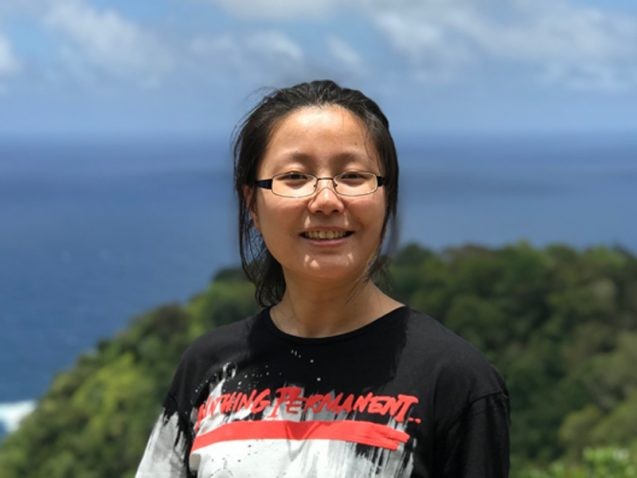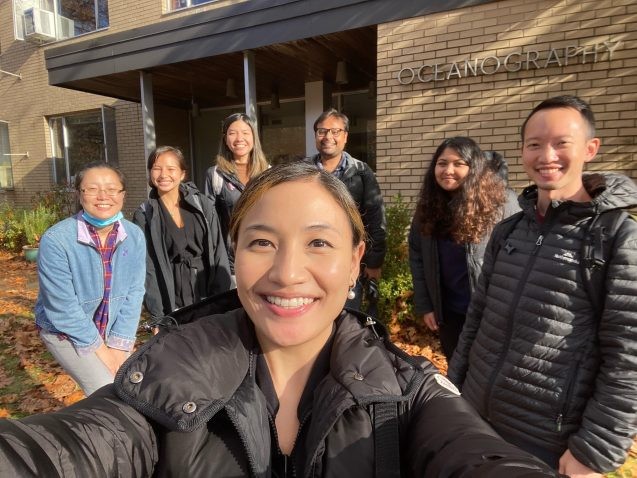Faculty Spotlight: Yutian Wu, Climate Modeler and Atmospheric Scientist
Wu is using climate models to study the movement of air pollutants through the atmosphere.

To the untrained eye, understanding climate models can be a daunting task. Constructing these models requires a skilled professional. Yutian Wu, a Lamont Associate Research Professor at Columbia Climate School’s Lamont-Doherty Earth Observatory, has spent close to 15 years studying atmospheric sciences and building climate models. She began her studies in physics, then sought to apply her mathematical background to more practical subject matter. Most recently, Wu’s research aims to understand how Arctic sea ice will impact North American weather extremes as well as how monsoons affect the transport of pollutants from the Earth’s surface to the stratosphere.
Wu currently teaches “Climate Science for Decision Makers: Modeling, Analysis, and Applications” in the M.S. in Sustainability Science program, offered by the School of Professional Studies in partnership with the Climate School.
How and when did you first become interested in atmospheric sciences and climate change?
My journey with atmospheric sciences and climate change began in my first year of graduate school. I studied physics — more specifically condensed matter physics — in my undergraduate. In graduate school, I wanted to explore areas that are more related to my daily life, while continuing my passion in physics and math. Studying atmospheric sciences gave me the opportunity to do so.
Your bio mentions that you are passionate about the intersection of education and research, with a long-term goal of improving math and data analysis proficiency in both K-12 and undergraduate education. Where does your interest in the overlap of these two fields stem from?
In my own research in atmospheric sciences and climate change, quantitative skills such as math, physics, and data analysis play a critical role. And I do think that the horizons can be broadened extensively with quantitative skills. Therefore, I would like to deliver the same message in both K-12 and undergraduate education. To do that, I’ve provided research opportunities for undergraduate students so that they can work with real atmospheric data and solve research problems. I’ve also worked with middle and high school teachers on research projects related to atmospheric rivers and Arctic Sea ice. This provided a great opportunity for the school teachers not only to study cutting-edge science but also to improve their classroom curriculum by including real data and phenomena-based learning to classroom teaching.

In 2017, the National Science Foundation awarded your project, “Monsoon and the Upper Troposphere Lower Stratosphere”, the prestigious CAREER grant, which provided five years of funding. Could you share a bit about the goals of your project?
Most people are probably aware that monsoons play an important role in bringing rainfall to populated regions including Asia and North America. But what’s less known to the general public is that the monsoons also transport chemical species such as pollutants and aerosols to the stratosphere, affecting the climate and chemistry of the stratosphere — for example, the formation of the stratospheric ozone. So, the goal of my NSF CAREER project is to investigate how the monsoons affect the transport from the surface to the stratosphere using both observations and climate model experiments.
Now, as we embark on 2023, how has the project panned out? What are some challenges you have faced? What are you most proud of?
We have made a lot of progress on the project. And now we have a better understanding of how and why the monsoons are effective in transporting pollutants to the stratosphere. Some of the challenges are, for example, how to design the numerical model experiments to test hypotheses, how to correctly interpret the model results and how to use the model results to help understand the observations. I am very proud that my group members all worked together intelligently, overcame the challenges and produced novel and interesting results. I am now really looking forward to continuing the research projects, especially in testing some of the hypotheses in recent field campaigns.
Why should students take your course? What will students take away from it?
Climate models are a primary and important tool for predicting global and regional climate variations and change, for assessing climate-related risks, and for guiding adaptation to climate variations and change. Our course provides a basic understanding of the fundamental principles of climate models and their applications. For example, we will talk about how Intergovernmental Panel on Climate Change (IPCC) models are constructed, how future climate projections are made, how confident we are about the future projections, what are the uncertainties, how the information of future climate projections is brought together for decision making and sustainability management. Throughout the class, the students will have the opportunity to analyze future climate projections, assess climate-related risks and make their own assessments and decisions.
Frederique Fyhr is an intern with the M.S. in Sustainability Management program at Columbia University.
